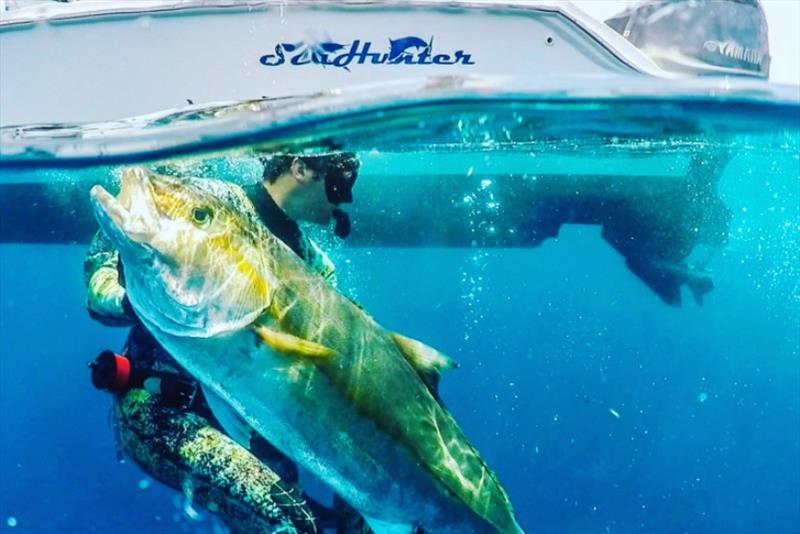
Recreational fishing: A favorite American pastime
by NOAA Fisheries 8 Oct 2021 11:34 UTC

Recreational fisherman with amberjack © Thomas Talbot
Recreational fishing is a beloved American pastime, with millions of anglers taking to the water every year. It's a simple activity that is great on your own or with family and friends alongside.
In the busy hustle and bustle of our daily routines, stepping out for a day of communing with nature may be just what we all need. For those who didn't grow up fishing, however, the thought of starting to fish may feel challenging. With a little help, you'll see how fun and easy it can be. It's even less intimidating if you start with a friend or family member! There are many resources available to get you started...even from the comfort of your own home.
Where to start
The first step is to register to fish or obtain a fishing license or permit for the state in which you plan to fish. To find out the license/permit requirements in your state, a great resource is Take Me Fishing. Your local sporting goods or department store is a great place to find affordable beginner fishing gear, as well as any bait/tackle stores.
How to start
There are numerous resources for those who don't know how to start fishing. Don't worry! Most coastal states offer free in-person or online education courses that can teach you the basics. The International Game Fishing Association currently offers a free Intro to Fishing course which provides young and/or novice anglers with a strong foundation of angling knowledge. It covers angling basics and safety, aquatic and marine biology, fish anatomy, environmental stewardship, and more!
Take Me Fishing offers a large variety of educational videos/ They cover topics such as picking a fishing pole, tying fishing knots, and specific instructions on how to properly fillet and cook your catch. This website also is available for viewing in both English and Spanish.
Where to fish
Looking for a place to cast that line? Check out this comprehensive map that allows you to search the entire United States for boat ramps, marinas, bait and tackle shops, and a whole lot more. You can even find a recommended list of "Best Places to Fish" for a specific species in your area. Just pick those species from a menu and it will show you the best places to find them!
Find the regulations
When it comes to recreational fishing, there are often regulations in place to ensure both sustainability and equal opportunities for anglers. These are necessary measures that are put into place to ensure the species and its habitat are protected and ensure the future of this great sport. While regulations will vary between state and federal waters, species are typically managed using simple tools.
Size limits: The minimum size required to keep a specific species. These limits are in place to protect younger species that still spawn, and are designed to make sure there is fishing to be shared by everyone.
Bag limits: Limits to how many of a specific species you can keep. These limits serve to keep a healthy population of the species while ensuring availability to the anglers.
Fishing season: Specific open and closed time periods for a specific species. These seasons are generally in place during a species spawning season and protect the species during heavily fished periods.
Fishing regulations are designed to protect fish and ensure ample fishing opportunities for everyone. If you fish, it's important that you know the rules and regulations. One easy to use tool is the Fish Rules app, which is available for free on both the Apple and Google store. This app is updated with current regulations as soon as you launch it and even offers location-based regulations for where you are or will be fishing. It provides detailed guidance on current state and federal regulations and even has photos to help you identify what you just reeled up!
NOAA Fisheries works to ensure sustainable fishing opportunities are available for this and future generations. We remain committed to strengthening our relationship with saltwater recreational fishers from coast to coast.